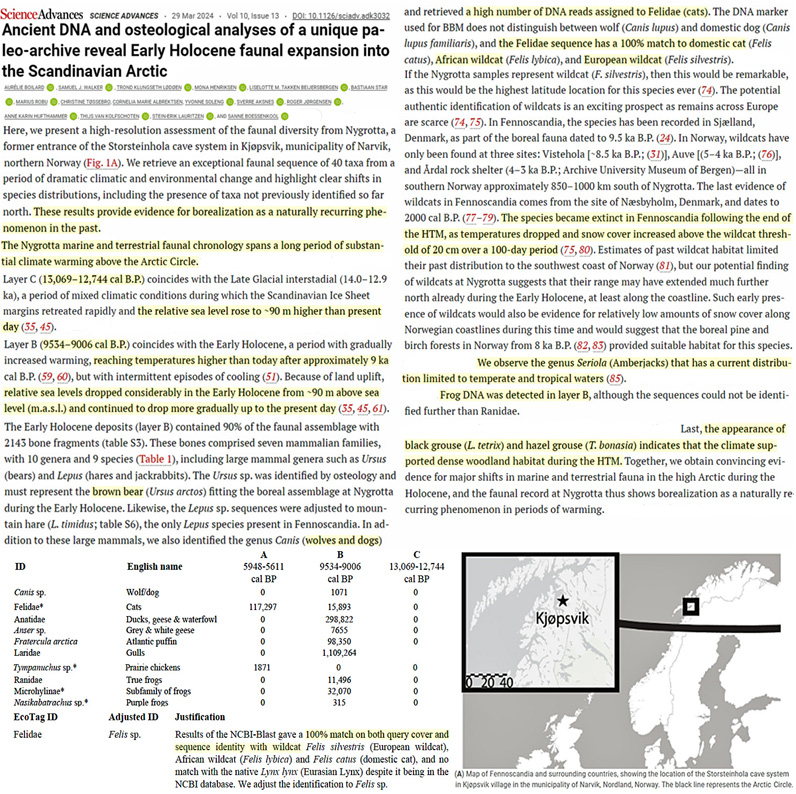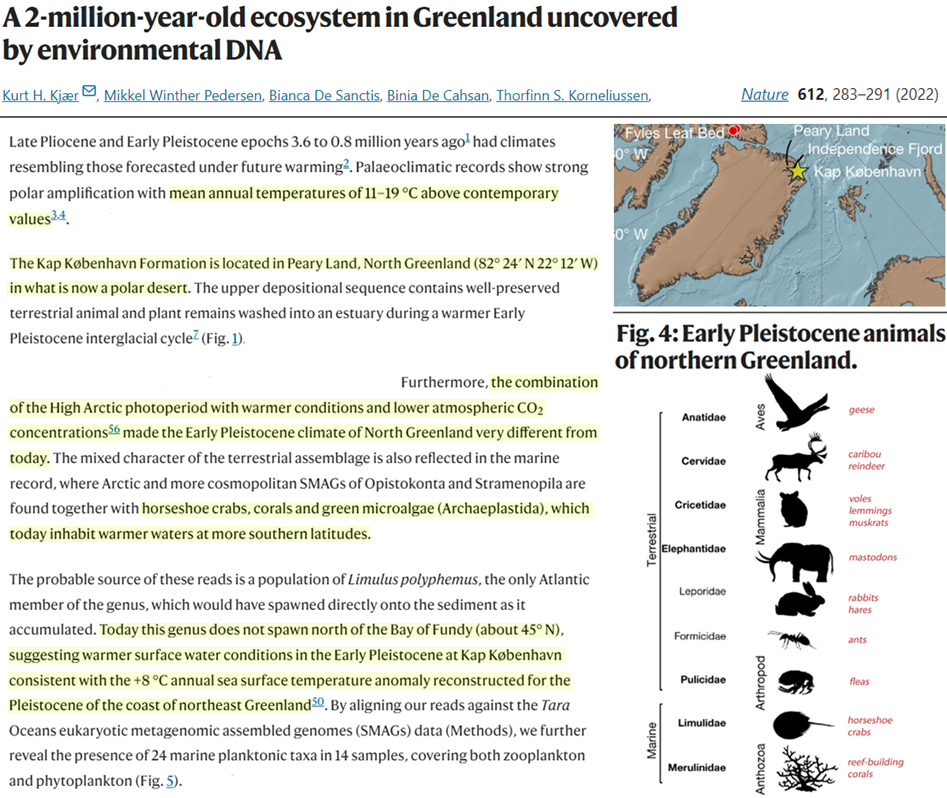A new study finds warmth-demanding species could survive in the Holocene Arctic (northern Norway) hundreds to thousands of km north of where they reside today. This affirms temperatures were “higher than today” with much less snow and ice back then.
DNA evidence from a site north of the Arctic Circle indicates African wildcat (Felis lybica) used to reside in Arctic climates when CO2 levels were under 260 ppm, or at supposedly “safe” levels. The authors suggest this is a “remarkable” finding, as it is the “highest latitude location for this species ever.”
The presence of domestic cats (Felis catus) and European wildcats (Felis silverstris) in this region is also validated by 100% matching DNA evidence. Wildcat species became extinct in northern Europe after the Holocene Thermal Maximum (HTM) ended and “snow cover increased above the wildcat threshold of 20 cm over a 100-day period.”
Amberjacks (Seriola) – a fish species only found in temperate to tropical Pacific and Atlantic waters (Gulf of Mexico, Brazil) today – also lived north of the Arctic Circle during the Early Holocene.
Dogs (wolves), ducks, geese, prairie chickens, gulls, brown bear, and several species of frogs (no longer present in the Arctic today) also found the Arctic climate temperate enough to reside in northern Norway in the millennia centering around 9000 years before present.
The presence of mussel shells at much higher elevations indicate sea levels were ~90 m higher than today 13,000 to 12,000 years ago in this region (due mostly to uplift), falling to ~57 m higher than present between 9500 and 9000 years ago and then gradually declining to the present.
The authors suggest the DNA-confirmed presence of these species north of the Arctic Circle – much further north of where they can survive today – is evidence that warming periods and borealization were “a naturally recurring phenomenon in the past.”

Image Source: Boilard et al., 2024
DNA analysis of species remains has become an insightful way to analyze past variations in climate. Another recent DNA database study (Kjaer et al., 2022) published in Nature indicated the High Arctic at 82°N (north of Greenland) was 11-19°C warmer than today 2 million years ago. This warmth allowed coral reefs, green algae, and horseshoe crab to reside in the Arctic Ocean at 82°N. Today horseshoe crab cannot occupy waters north of 45°N due to the much cooler ocean temperatures.






Pole shift.
Seahorses on the Andes mountain ranges.
“The Revelation Of The Pyramids (Documentary)” – https://www.bitchute.com/video/akvHLJHJGeyL/
[…] Tricks Zone has also commented on the findings of this paper, noting that wildcat species became extinct in northern Europe after […]
[…] Tricks Zone has also commented on the findings of this paper, noting that wildcat species became extinct in northern Europe after […]
[…] Tricks Zone has also commented on the findings of this paper, noting that wildcat species became extinct in northern Europe […]
[…] Tricks Zone has also commented on the findings of this paper, noting that wildcat species became extinct in northern Europe after […]
[…] Tricks Zone has also commented on the findings of this paper, noting that wildcat species became extinct in northern Europe after […]
[…] Tricks Zone has also commented on the findings of this paper, noting that wildcat species became extinct in northern Europe after […]
[…] Credit to Kenneth Richards who found the study and discussed it at NoTricksZone […]
[…] Credit to Kenneth Richards who found the study and discussed it at NoTricksZone […]
i am pretty sure i read before that the vikings in greenland were able to grow grain in historic times there between 1000 and 1450 when their colony apparently disbanded. that was much more recent. as far as i know, no grains will currently grow in greenland.